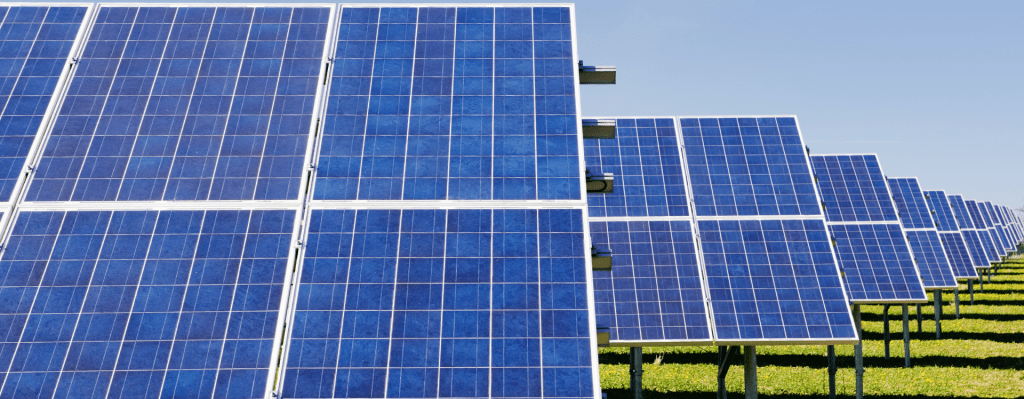As a farmer and landowner, it is vital to understand the tax implications of changes made to your land in order to enter into schemes that advance environmental policies. These can include subsidies, biodiversity net gain, carbon credits, battery storage, solar and more. Our tax specialists explore the potential impacts on your tax position.

Whilst there is currently some debate in Westminster about the direction and speed of environmental policies, there is still a shift towards more environmentally beneficial uses of land, and with it, opportunities for farmers and landowners to benefit from new projects providing environmental services. The ability to adapt to these changes is business-critical and can bring in significant benefits but it is important to consider the full financial picture before you embark on a new project.
In a previous article, we have referenced the government consultation currently underway on this topic and look forward to some progress and guidance in due course on how HMRC propose to tax it.
This article explores some examples of new income sources our clients are considering, the tax implications surrounding them and opportunities to reduce associated liabilities.
Biodiversity Net Gain
Biodiversity Net Gain (BNG) refers to a requirement coming into force this year for developers to ensure that they offset the damage they are potentially doing to habitats by ensuring that there is a net gain to biodiversity elsewhere. This can sometimes be offered by the same landowner as the development site or by another landowner able to offer suitable land.
The aim of BNG is to leave the natural environment in a better state than it was before the project started. BNG therefore offers an opportunity for landowners to create or enhance habitats and sell the resulting biodiversity net gain units to developers.
How can BNG affect your taxes?
Income tax
There is still a lot of uncertainty surrounding the tax treatment of the sale of BNG units. Some are sold to a developer, which would involve the landowner entering into an agreement with the appropriate local authority to provide and maintain a site over a set number of years (usually at least 30). There is no lease agreement entered into and therefore there has been some debate over the nature of the receipts and whether they should be taxed upfront or spread over the period of the agreement.
It is currently thought that these may be receipts for providing a service (in whole or in part) and therefore at least some of it is an income receipt that should be spread over the full period. Spreading the income would allow expenses relating to managing the land to be offset as they arise and could also lead to more of the income being taxed at lower income tax rates (depending upon the number of units sold).
The tax liability could range from 20% to 45% depending on how the land is held and the holder’s effective rate of tax.
There are also potentially agreements where the landowner might grant a long lease over the land to a third party who would then be responsible for setting up and maintaining the site. In this case the landowner does not actively manage the land and the tax treatment may well be the same as for a standard lease.
If the receipts are taxed as income for providing a service and are classed as trading receipts, then this has a knock-on effect for National Insurance purposes but might be beneficial for capital taxes purposes.
Inheritance tax
There are two main Inheritance Tax (IHT) reliefs that could be impacted by changing the use of the land. If your land is removed from agricultural production for an extended period for a BNG project, it may no longer qualify for Agriculture Property Relief (APR). The relief may, however, be updated and extended following the consultation referred to above.
As APR only applies to the agricultural value, if there is any additional value associated with the land then Business Property Relief (BPR) may also be relevant. BPR would only be available if your land continues to be used within a trading business, and you continue to meet the conditions for BPR. One of the main conditions is that the business must be wholly or mainly (at least 50%) trading. If you are managing the land yourself on an active basis, this might qualify as a trading activity and help preserve relief, but guidance is still needed on this point.
Capital Gains Tax
Changing the use of the land could also affect the availability of certain capital gains tax (CGT) reliefs.
One key relief is gift holdover relief, which allows certain assets to be gifted without an immediate CGT charge arising. If the income from your BNG project is not considered to be trading income or the land allocated to your project is no longer used for the trade, gift holdover relief may no longer be available.
Gift holdover relief also applies to certain agricultural land even if it is not used in a trade, however if the land is no longer deemed as being used for the purposes of agriculture, then the relief may no longer be available.
VAT
DEFRA has announced that it will be introducing mandatory registration of BNG sites from November 2023. As part of a consultation outcome paper, DEFRA stated: “Work is underway to provide guidance on the tax implications for habitat creation and enhancement. Biodiversity units will be subject to VAT when they are sold.”
This would appear to be a change in policy from HMRC, although there has been nothing official from them yet. There has been no mention of options to tax, which suggests that HMRC deems BNG to be a taxable supply of services rather than an interest in or supply of land.
Opportunities to minimise tax implications
- Transferring land – transferring land to the next generation before you start a BNG project could protect your estate from certain capital tax implications and make income available to those family members. This is a complex process and you should consult a tax specialist to avoid potential consequences, such as clawback of reliefs.
- Consider the structure the land is held in – changing the structure may have advantages. For example, if your land is held within a company, your income and capital will be taxed at the same rate, eliminating the risk of receipts being taxed incorrectly if prevailing views change. Again, this would have additional tax implications so you should consult a tax specialist to prevent unforeseen tax charges arising.
- For the time being, make sure that you will be the one managing the land for environmental purposes, i.e. doing something in return for the receipts. It is more likely that capital taxes reliefs will be available if you are.
- If you can wait a little longer, we may be pleasantly surprised and receive some guidance from HMRC to help us with the planning once their consultation is complete!
Battery storage and Solar
Solar projects provide renewable and sustainable sources of energy. Increasingly, battery storage for electricity is being sought in addition to the land needed to provide that energy. Both require sites and can command significant rents.
How can solar and battery storage affect your taxes?
Income tax
Allowing solar farms and battery units to be built on your land can result in significant income. The money you receive will likely be from rent on the land and therefore would count as non-trading income. (Generating electricity for sale would, however, be a trading activity). The tax liability could range from 20% to 45% depending on how the land is held and the holder’s effective rate of tax.
Inheritance tax
Any land you dedicate to solar and wind farming is no longer primarily being used for agricultural purposes, which means you are unlikely to be able to claim APR on it. In addition, as any income received may outweigh trading income received, BPR may no longer be available on the land either. In a worst-case scenario, it may jeopardise relief on other trading assets within a partnership or company.
Capital Gains Tax
CGT will be due on any premiums you receive from a lease for solar or battery developments.
Due to land no longer being used for a trade and/or the increased non-trading income, you may find yourself on the wrong side of the “80% test” for CGT purposes when comparing trading activities vs investment activities within a business. If this is the case, CGT reliefs, such as gift holdover relief and Business Asset Disposal Relief, may no longer be available and it would become more costly to make gifts of the land or make a sale of your business.
Opportunities to minimise tax implications
- You may consider if it is appropriate to transfer land to the next generation before entering into any agreements for solar or battery sites.
- Is the land chosen for the solar or battery site held in the best structure? You should think about where the income is likely to be required. Although a corporate structure has a lower headline tax rate of 25%, it could end up being more expensive if income needs to be withdrawn regularly. It might also be sensible to take a site out of an otherwise trading farm partnership to protect relief for the rest of the assets within it.
A sustainable and profitable future with specialist tax support
Opportunities from sustainable projects can be a welcome injection of cash funds and profits into a farm or estate that can be used to help improve it. A little planning may be needed to ensure that there are no unexpected tax costs associated with those extra receipts.
With expert guidance from our tax team and agricultural specialists, you can adapt and prepare your business for a greener future while saving money on your taxes. Contact us today to find out more about our services.




